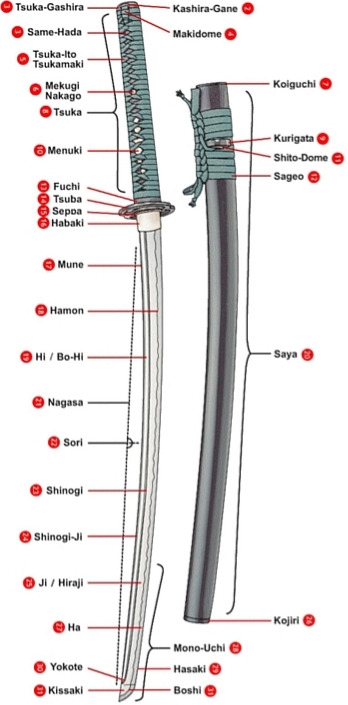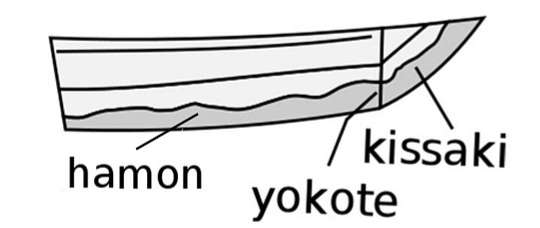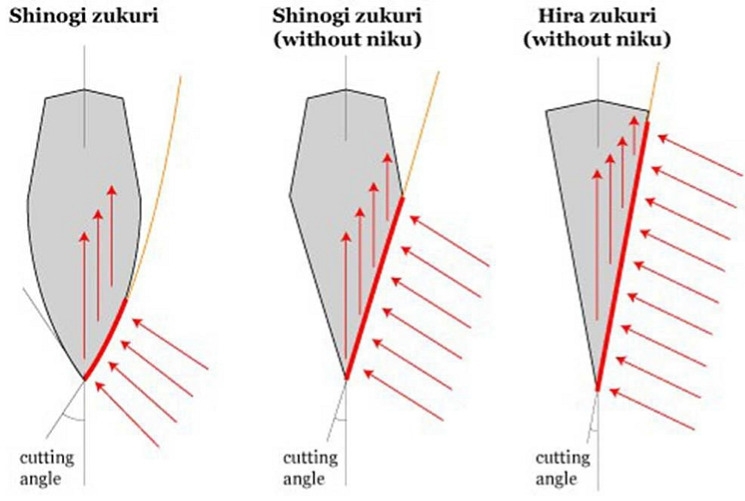Bofu-Rin Japanese Katana - T-10 Steel, Yokote - Choji Hamon
Code: ST-106


Related products

Tatami Omote (Makiwara) made of natural igusa, ideal mats for tameshigiri, slash test and chopping practice. Affordable, eco-friendly mats faithfully mimic the resistance of the...

stylový stojan pro meče a katany & lesklé luxusní provedení & z přírodního masivu & černě lakovaný

two-tier wooden stand & matt, black & for katanas & for wakizashi & for tanta
Product detailed description
Katana Bofu-Rin, steel T-10, real hamon Choji
nagasa 2,29 Shaku
Forged Japanese sword KATANA with real Choji hamon. Sharp (cut) samurai sword KATANA will find its use as a decoration, but also for active martial arts training. The steel is partially hardened and has a hardness grade of 58 HRC. An attractive and sharp blade, a saya made of hardwood lacquered glossy, plus a tsuka (handle) that is covered with genuine stingray leather, all make this katana very interesting and desirable. The katana is stored in a canvas bag. The blade of the katana is decorated with a real hamon Choji. Company Dellinger disclaims all liability for injury and damage resulting from use. Keep the katana out of the reach of children! Any handling of the samurai sword is your own responsibility. Remember, you have a deadly weapon in your hands!
Ready to fight (functional) katana with blade length 2,29 Shaku 69,5 cm
The tip of the blade is shaped shinogi-zukuri and chu kissaki.
The blade has a sori (blade curvature) designed for the cleanest and finest cuts. Combined with the impressive hardness of the steel and the full tang construction of the katana, it is possible to easily cut through tatami, straw mats or bamboo for tameshigiri.
Do you need some advice?
We will be happy to help you with your selection or answer your product questions! Call our customer service line at 702 049 048, which is available for you Mon - Fri, 7:30 am - 4:00 pm!Technical description of components

- Blade material - t-10 steel
- Saya: (shell - cover) made of hardwood in dark honey gloss lacquer. High-quality silk Sage-O braid is tied around the Kurigata (button) of the Sayi (sheath-cloth). Koiguchi and Kojiri from black buffalo horn
- Tsuba: (guard) black cast steel
- Tsuka: (handle) wooden core wrapped with genuine stingray (Samegawa) leather with black braid - Ito. The blade of the katana is secured with two mekugi (bamboo pins). You can remove the blade from the handle by pulling out these pins. On each side of the Tsuka (handle) there is a menuki (ornament under the braid). Steel handle end (Kashira) with decorative motif
- Total length of katana (without saya) - 103 cm
- Blade length (Nagasa) - 69,5 cm (from the end of Habaki)
- Length of the handle - 31,0 cm
- Weight - 1220 g
- Habaki - brass (length 2,5 cm)
We will make a katana for you according to your requirements
We make katanas, wakizashi and tanto knives to customer's specifications. The lead time after payment of the 30% deposit ranges from 60-90 calendar days.Grounds for non-recognition of warranty - misuse

- In general, these are all activities except for traditional chopping test techniques, which involve chopping into special mats.
- Chopping branches, trees and bushes: for this activity, people have developed other tools such as axes or machetes.
- Chopping or swordplay with another sword: destructive damage to the blade of a samurai sword occurs - samurai avoided any direct contact with the enemy to avoid damaging the blade. The repair was long and expensive.
- Never carry a sharp samurai sword with the blade exposed in public: always keep the sword sheathed in the Saya (scabbard). In Germany and other EU countries, this is even an obligation prescribed by gun law.
- Never insert a dirty blade into the Saya: If you are performing chopping tests on fruit, clean and preserve the blade immediately after chopping, otherwise the blade will rust and oxidize.
- Never leave your sword in a damp place such as a porch, shed, cellar or conservatory: This traditional weapon certainly doesn't deserve such treatment. Always clean the blade after use, brush with oil and store the sword in a dry place.
Dellinger guarantee
Products supplied by Dellinger come with a 100% satisfaction guarantee or a risk-free money back guarantee. We guarantee an excellent product that will give you the best service and is proven by many satisfied customers. Each piece can become a wise gift solution for a birthday, wedding or Christmas. Every product that Dellinger offers is carefully inspected. We bring you a lifetime warranty against any hidden defects. If you have any questions - our team is fully at your disposal and will try to help you in any (even unpleasant) situation.
Wakizashi Nobunaga & Nagasa 1,60 Shaku & Japanese Sword & AISI 1045 carbon steel & polished Hamon imitation & Diamond Shaped Yokote & chu-kissaki tip & Bo-Hi gutter & Blade...


Wakizashi Kyūbu & Nagasa 1,60 Shaku & Japanese Sword & AISI 1095 Hi-carbon steel & real hamon Choji & Diamond Shaped Yokote & tip chu-kissaki & gutter Bo-Hi & blade hardness...













